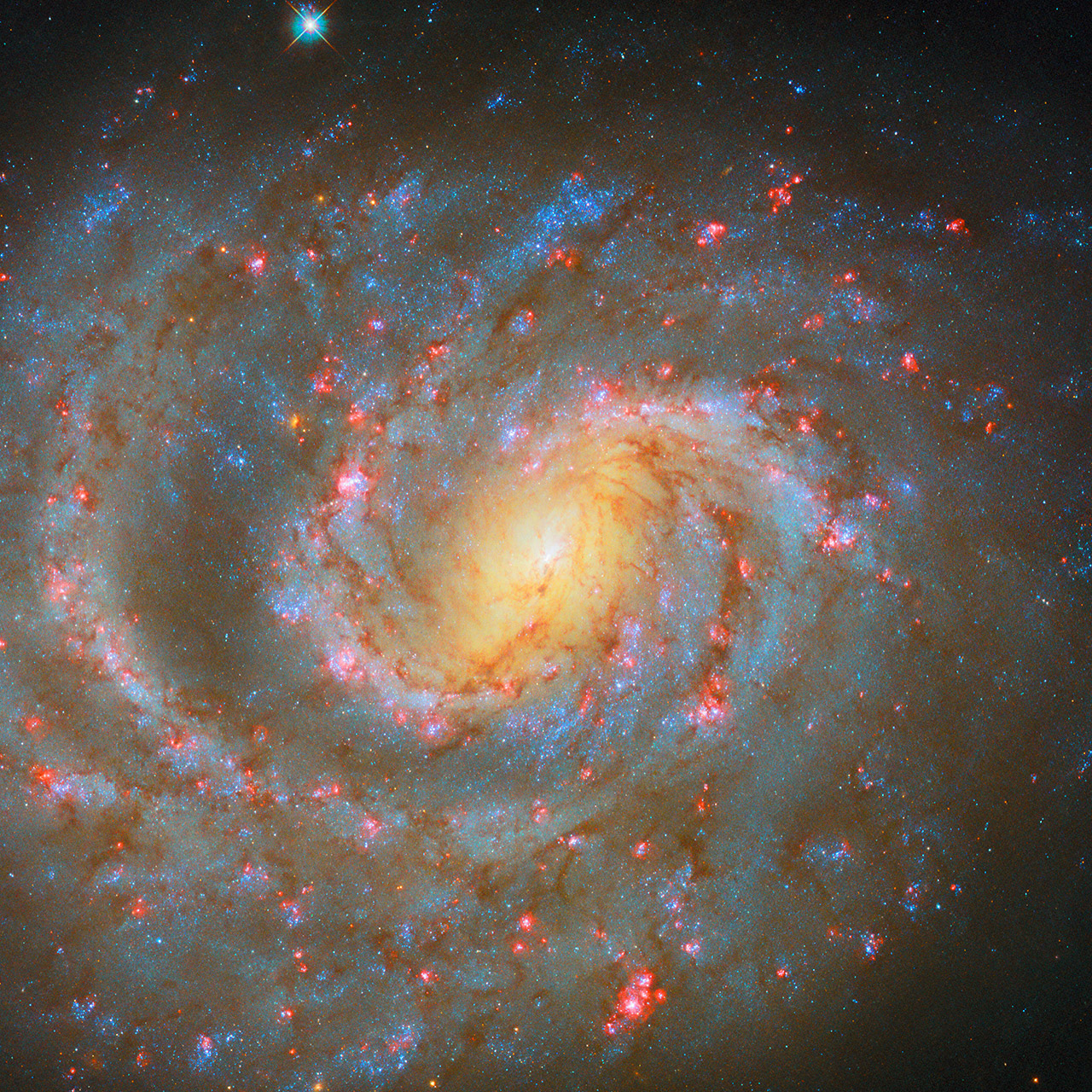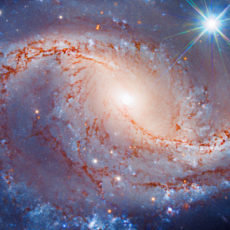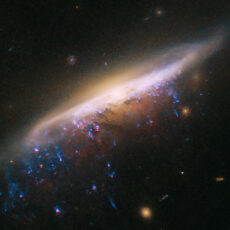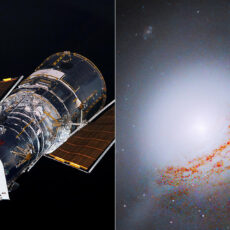
NASA / ESA’s Hubble Space Telescope observes NGC 1637, an extremely large spiral galaxy located 38 million light-years from Earth in the constellation Eridanus. Star formation is clearly evident in the galaxy’s spiral arms, which are dotted with what appear to be pink clouds, accompanied by bright blue stars.

The pink color comes from hydrogen atoms that have been excited by ultraviolet light from young, massive stars. This contrasts with the warm yellow glow of the galaxy’s center, which is home to a densely packed collection of older, reddish stars. NGC 1637 also hosted supernova, named SN 1999EM, detected by astronomers in 1999.
- Superior Optics: 400mm(f/5.7) focal length and 70mm aperture, fully coated optics glass lens with high transmission coatings creates stunning images...
- Magnification: Come with two replaceable eyepieces and one 3x Barlow lens.3x Barlow lens trebles the magnifying power of each eyepiece. 5x24 finder...
- Wireless Remote: This refractor telescope includes one smart phone adapter and one Wireless camera remote to explore the nature of the world easily...
A spiral galaxy filling the view. Its disc is filled with bright red spots where stars are forming, dark reddish threads of dust that obscure light, and bluish glowing areas where older stars are concentrated. It has a large, glowing yellow oval area at the center, from which two spiral arms wind through the galaxy’s disc. The bottom side of the disc is rounded while the top side is somewhat squared-off,” said the ESA.













